On a brisk and sunny March day, the dry grass of the south Whitby Meadow stood tall as a few dozen volunteers gathered with hand tools, potted shrubs waiting to be planted and bundles of live stakes — thin branches cut from black willow and silky dogwood trees intended to take root and sprout along the bank of nearby Cobbs Creek.
What is now a meadow had been a baseball field for at least 75 years on the Philadelphia side of Cobbs Creek, the boundary between the city and Yeadon in Delaware County. Two ballfields had occupied the Yeadon side as well. According to Tom Dougherty, who worked for Philadelphia Parks & Recreation and its predecessor the Fairmount Park Commission, the fields were underused and were prone to flooding from the nearby creek, so, in the early 2000s, the park’s Natural Lands team converted them to meadows, habitat that is now scarce in a region where any untended land tends to sprout trees.
“The meadow is a great spot to go exploring and birding, particularly early [in the] morning,” says Robin Irizarry, Delaware River watershed program manager for Audubon Mid-Atlantic. “It’s a nice and peaceful spot. You go at dawn, and when the sun is hitting the trees at the edge of the meadow, it just comes alive with birds. We did a walk in the fall in the peak of fall migration and had 40 species.”
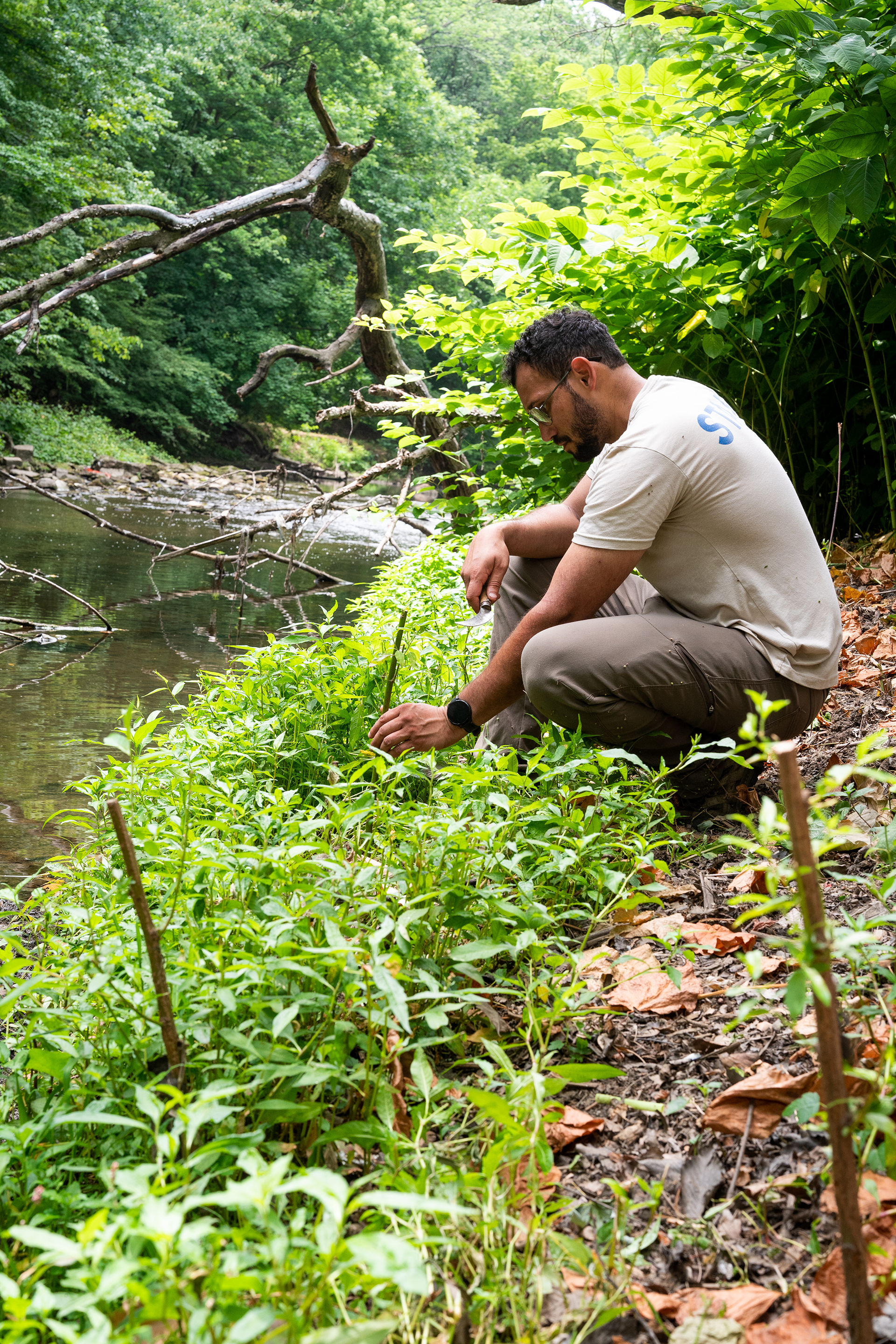
Trees that began growing soon after the park was created from old industrial and agricultural lands in the early 1900s now stand tall around the meadow, forming a canopy of oak, maple and tulip trees. Beneath those trees, however, little has sprouted recently except exotic plants such as wineberry and oriental bittersweet. “Those plants don’t provide much ecological services for critters along the creek. Native insects don’t find those plants as palatable as the native species that should be there, and that chips away at the local ecosystem,” Irizarry says.
“The focus of our work has been to work with Philadelphia Parks & Recreation and other partners to enhance the riparian zone and the meadow across these two meadows,” Irizarry says.
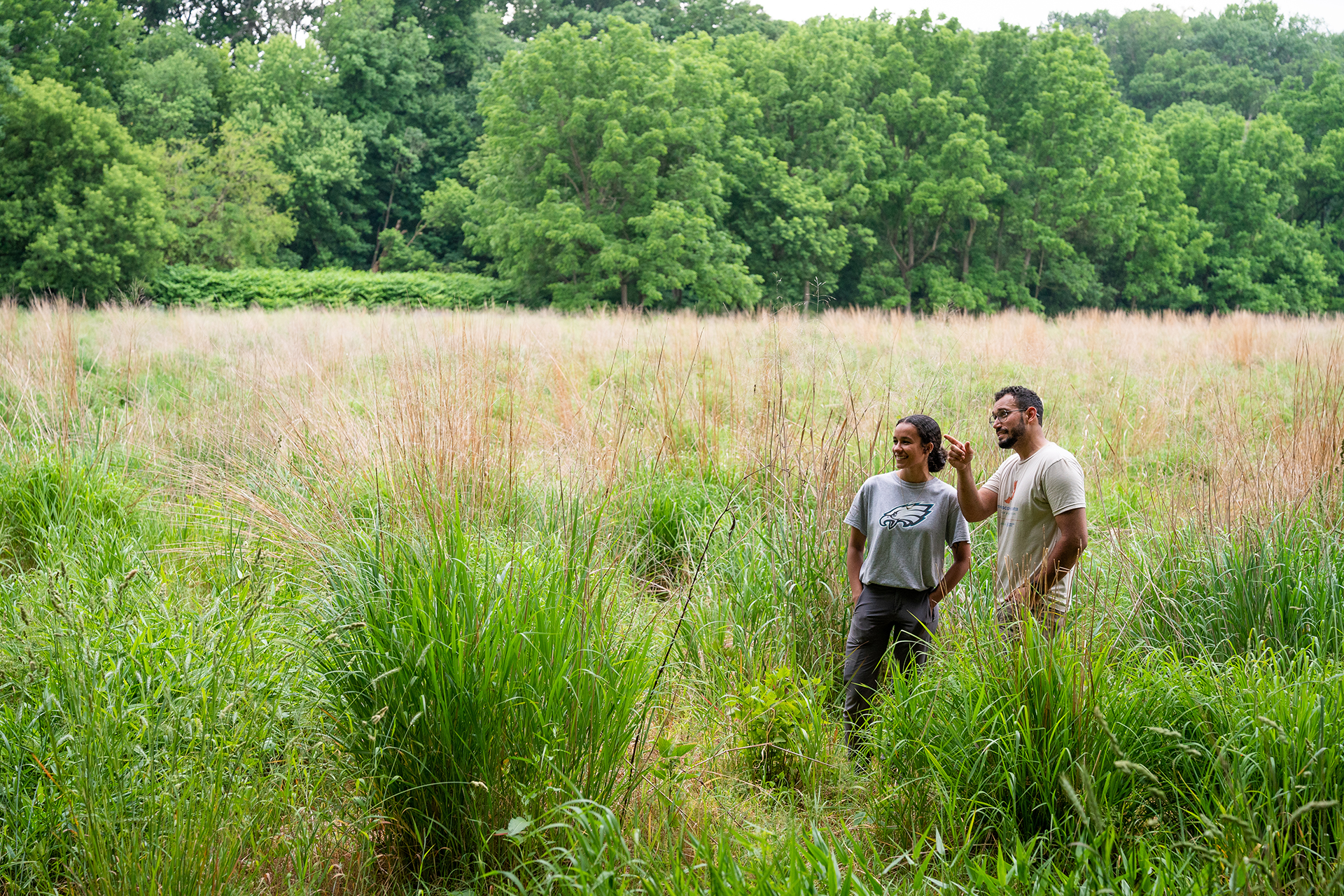
Bethany Teigan, founder of the Philadelphia Mycology Club, first came to Cobbs Creek in search of mushrooms. She helped out on a citizen science project to track down fungus species that had last been documented in the Philly area more than 100 years ago, many of them in what is now Cobbs Creek Park. That led to her organizing trash cleanups and in 2021 a role in the Cobbs Creek Ambassadors, a group that organizes stewardship activities in the park. “I had posted signs around the Thomas Ave. parking lot [near the meadows] about when our cleanups were, and someone from Audubon reached out.”
“We did a big trash cleanup where they filled up a dumpster and had it taken away. There was furniture that day, like a couch. There’s always a lot of contractor dumping along Whitby,” says Teigan, who took part in the March planting event.
The first step to plant a live stake is to pound a section of rebar into the mud, sand and cobble at the edge of the water. This creates a long hole that, with the rebar removed, is easy to push the stake into.
Planting live stakes is a low odds/high volume project. Many of them will not sink roots into the soil and grow leaves, but if you plant a few dozen, only a small portion need to survive to produce a shoreline dominated by native trees and shrubs that will serve as food for wildlife such as beavers as well as hosts for butterflies and other insects. In the months since the planting, the current of Cobbs Creek has draped the stakes in plastic debris and dead leaves, but many of them are sprouting leaves.
Urban habitat restoration is not without its hurdles. A fire this spring burned part of the south meadow. Irizarry says they were able to re-seed the burned portion. The fire also burned some of the shrubs they had planted around the edge, “but a lot of that stuff is resprouting from the base.”
It’s just that experience of being in a more natural setting and you really haven’t gone all that far.”
– Robin Irizarry, Audubon Mid-Atlantic
The work is not done. Exotic invasive plants like Japanese hops and mile-a-minute weed threaten the meadows. There is a lot of shoreline and forest understory still to plant. Contractors working for Parks & Recreation have knocked back the Japanese knotweed along the creek, work that will need to be repeated until the willows and dogwoods grow enough to shade it out.
Audubon, along with a long list of partners that includes the Darby Creek Valley Association, the Fairmount Park Conservancy, Mobilize Green and LandHealth Institute, has made the site more accessible and welcoming in the meantime by clearing a trail down from the multi-use path along the nearby Cobbs Creek Parkway and installing a sign to let passersby know what they can find on the other end of that trail.
“It’s kind of an off-the-radar spot,” Irizarry says. “It feels removed from the neighborhood when you walk down the trail from the parkway. It’s just that experience of being in a more natural setting and you really haven’t gone all that far.”

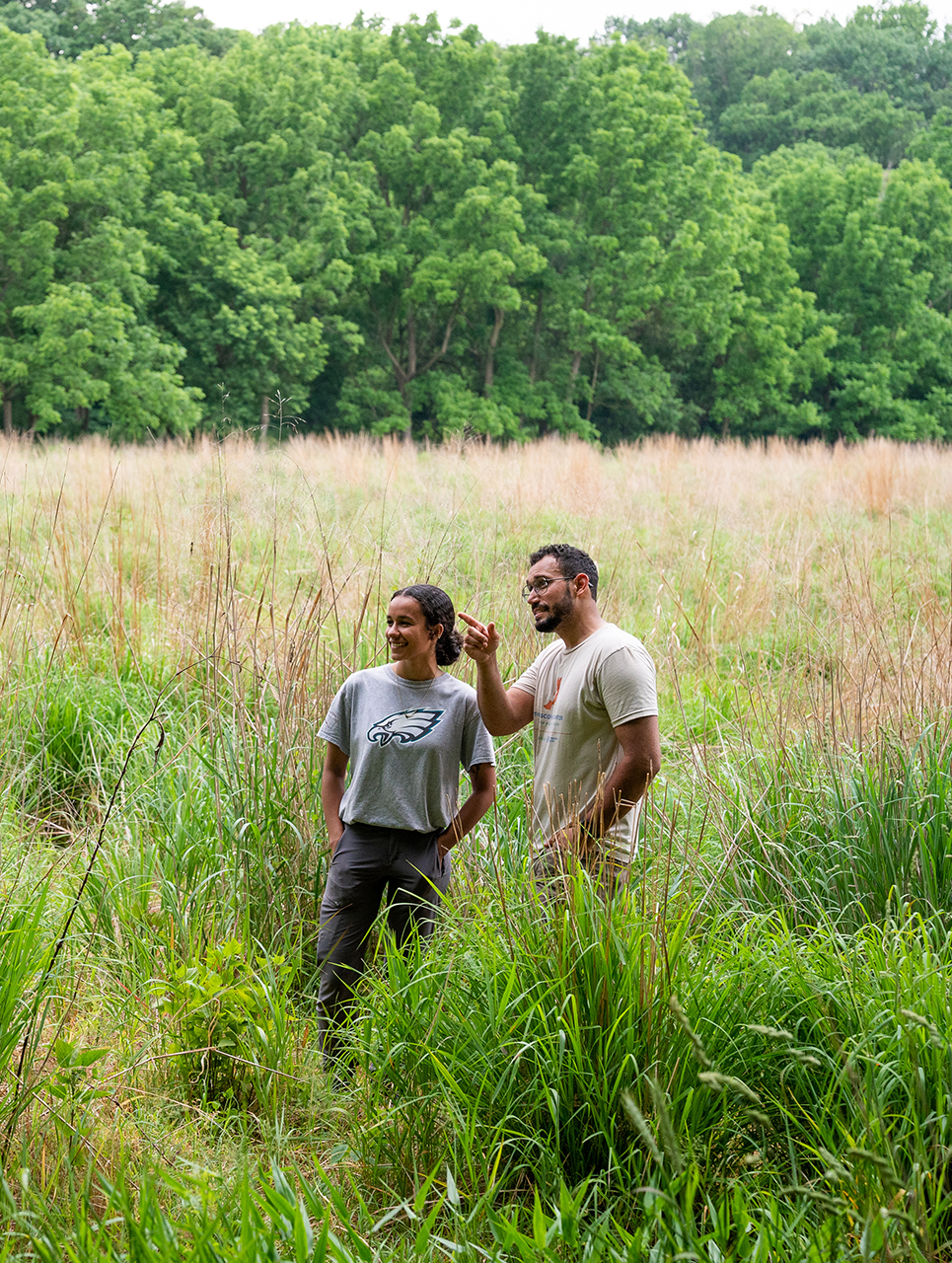

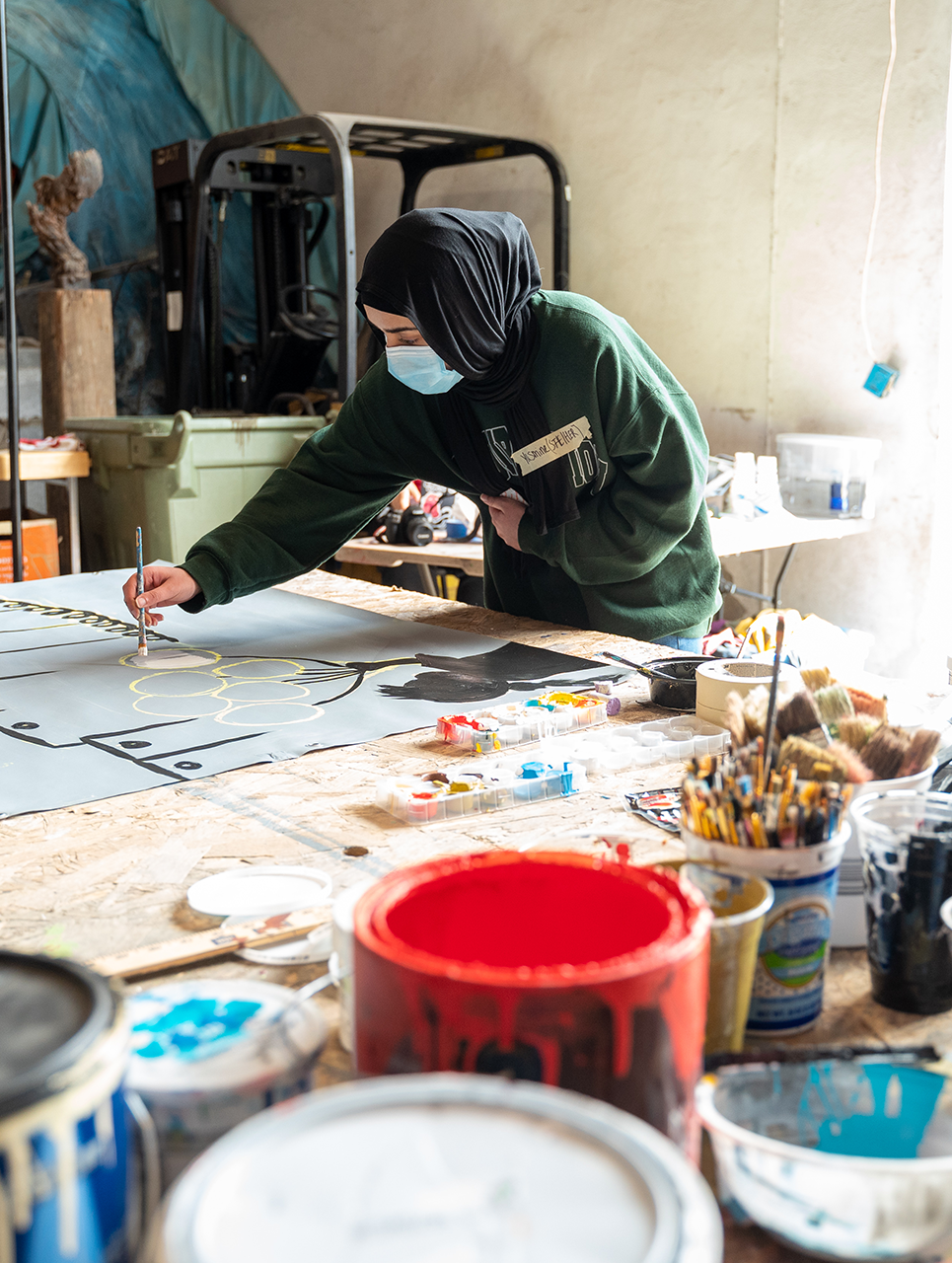

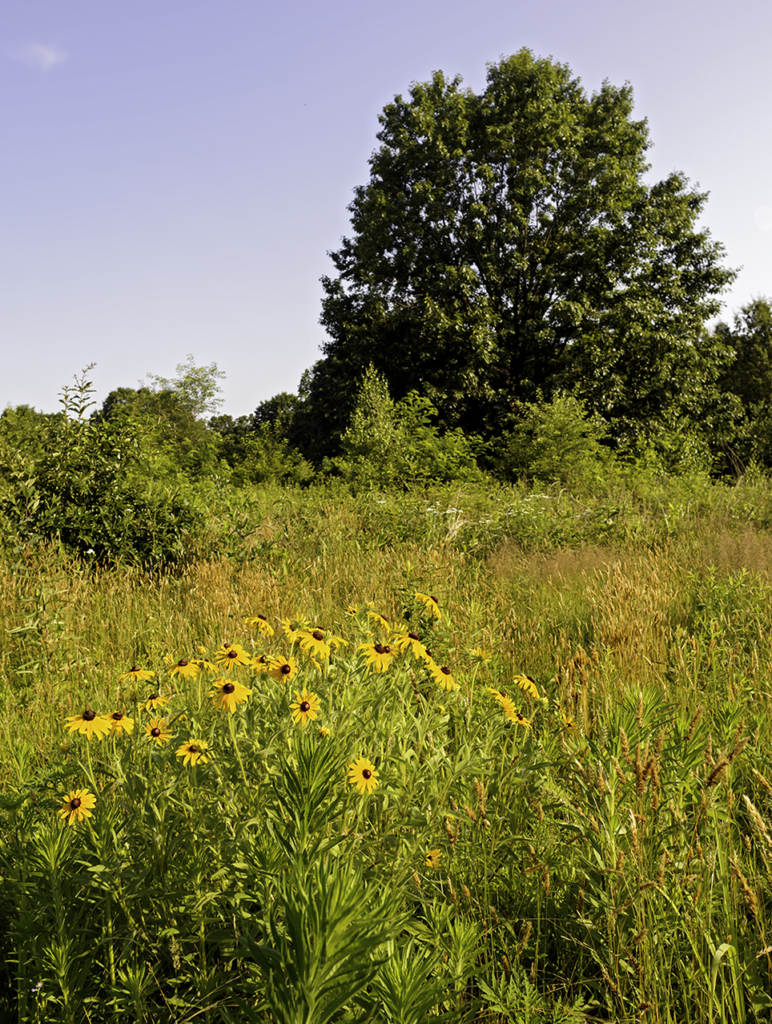
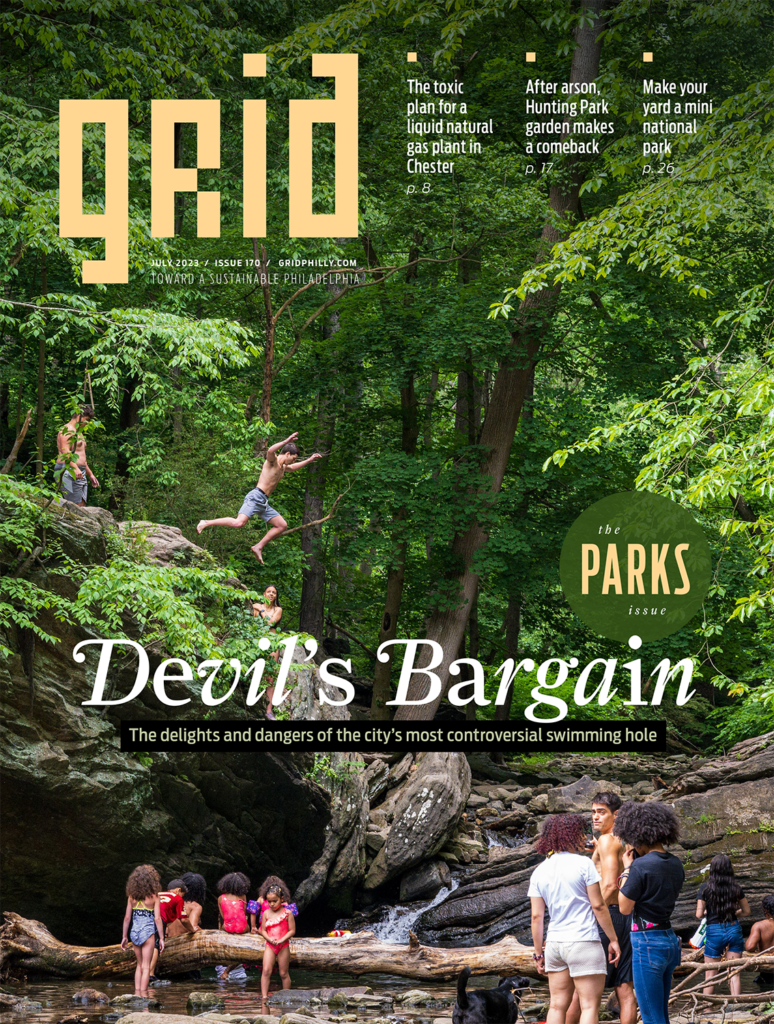

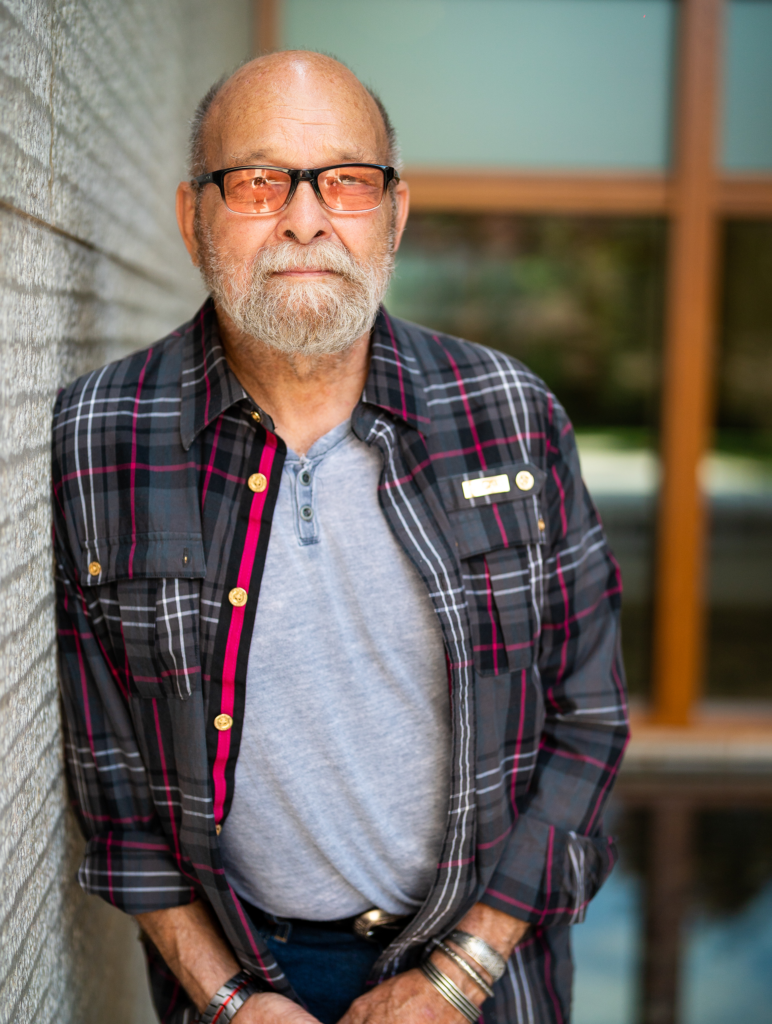
So glad to read about the terrific work to restore the Whitby meadow! I’ve done an annual bird survey there since 1996 as part of the Philadelphia Mid-Winter Bird Census, so I’ve seen it at its worst…. Great job by Robin, Beth and so many other volunteers! Thanks for the reporting.